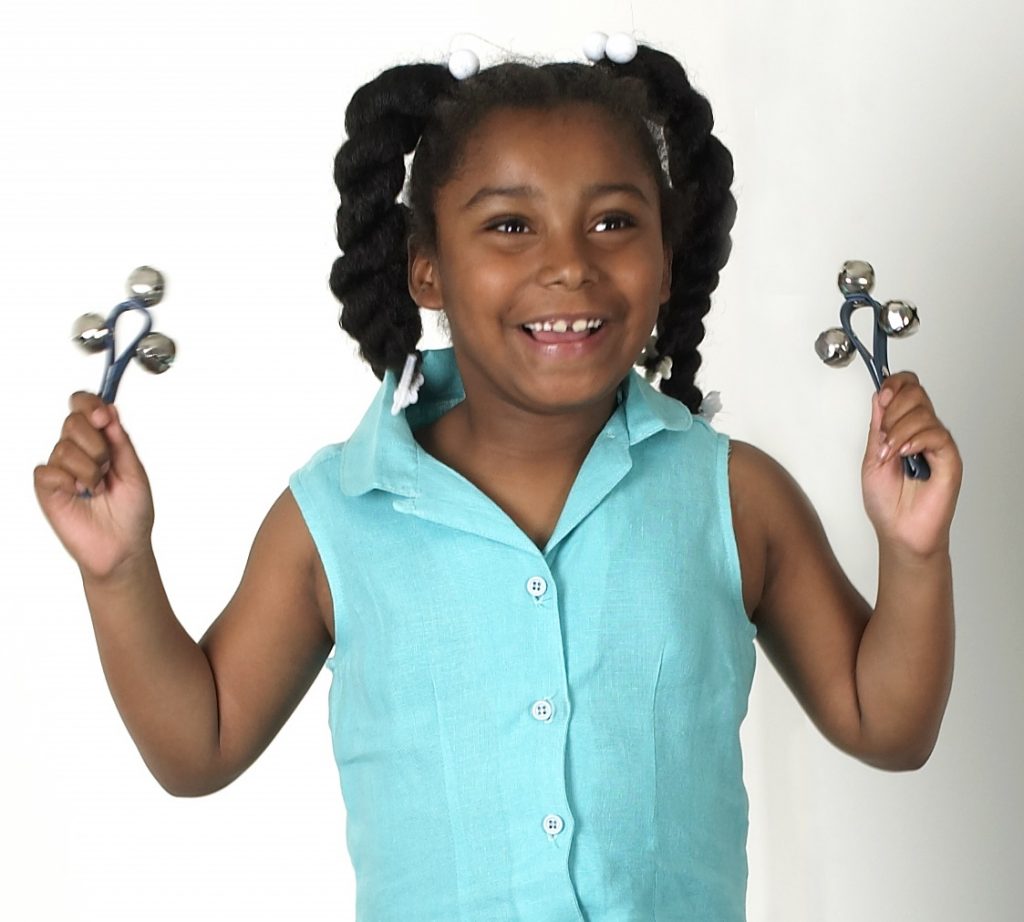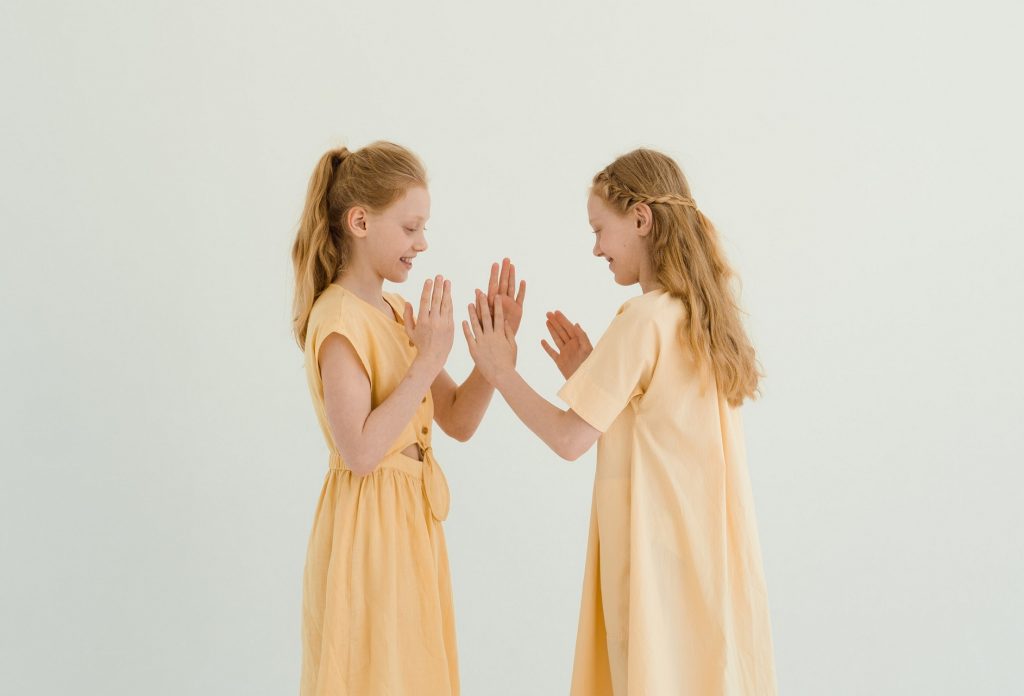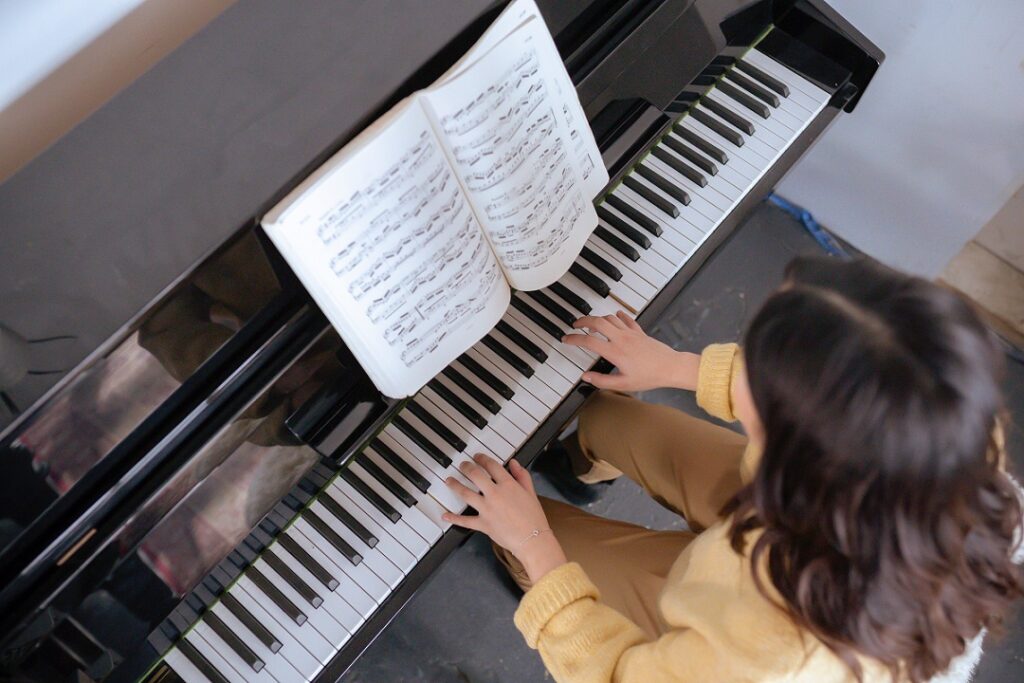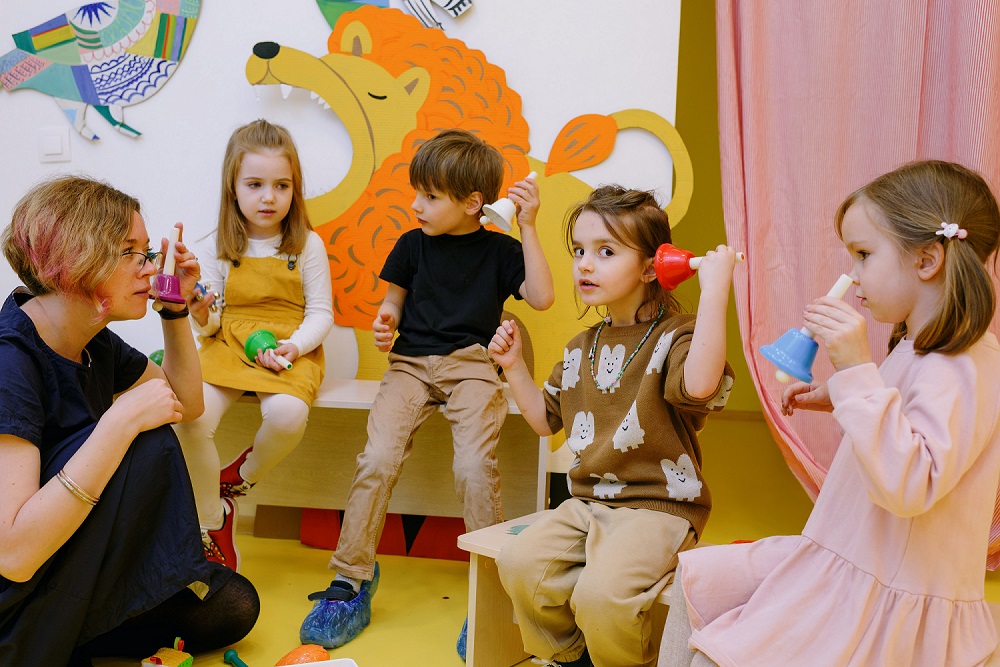Elementary Music Crafts: Handmade Instruments
With a bit more planning, you can teach your elementary students how to make musical instruments out of straws, popsicle sticks, cardboard and paper plates.
Handmade instruments are one of my favorite activities to do with elementary students. You can find an instrument craft for every age group. Try planning one of these projects in your lessons for this upcoming fall!
The Benefits of Manipulatives
Manipulatives are any hands-on educational tool that supports learning. Manipulatives and crafts are a great way to incorporate deeper learning through dual coding — an educational theory that students process information best when they learn sensory visual and verbal content together.
The crafts in this article are instruments that students can use to self-direct their exploration of music, which has a positive impact on young musicians, and is often incorporated in state music standards. Lastly, hands-on experiences get students’ attention in a way that paper and pencil work doesn’t.
Types of Instrument Crafts
These are the most common instrument craft categories:
- Straw instruments
- Popsicle stick instruments
- Cardboard instruments
- Homemade hand percussion
Most of these crafts are economical because they use resources that most teachers already have.
Straw Instruments
Straw instruments are more difficult to play, so I would recommend the following activities for upper elementary classes.
 Straw panpipe: Straw panpipes are a great way to teach about how length affects pitch and how scales work. To make a straw panpipe, you will need wide straws and materials to connect them, such as string, popsicle sticks and rubber bands, or simply tape. While you can use thin, they are much harder to get a sound on than bubble tea/boba straws.
Straw panpipe: Straw panpipes are a great way to teach about how length affects pitch and how scales work. To make a straw panpipe, you will need wide straws and materials to connect them, such as string, popsicle sticks and rubber bands, or simply tape. While you can use thin, they are much harder to get a sound on than bubble tea/boba straws.
MakerState, a nonprofit that focuses on hands-on STEAM education for schools and students in need, does a great job showing how to make a sturdy panpipe tuned to a pentatonic scale using straws, rubber bands and large popsicle sticks. Straw pan pipes are great prep for future flutists.
You can also make smaller pan pipes (from Tea Time Monkeys) with smaller straws, tape and paper.
Straw Reed: If you want to make sure that there are enough oboists or bassoonists in the high school band, get them started early with straw reeds. This craft also teaches how back pressure on instruments like the trumpet feels and helps young woodwind players produce a steady stream of air. Straw reeds work when you press your lips together, and the two pieces of the straw meet and vibrate.
A straw reed can be used at any age. It was one of my college flute professor’s go-to methods to revitalize a flutist’s air pressure.
To make a straw reed, cut a straw to a point and then snip off the peak. Be careful because the tops can be sharp, depending on the angle at which you cut them.
To get started, check out this instructional straw reed guide from SPS National.
Popsicle-Stick Instruments
You’ve probably heard of photo frames made from popsicle sticks, but how about harmonicas or even kalimbas?
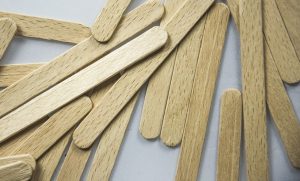 Popsicle-Stick Harmonica: This is one of the faster projects on our list. Popsicle-stick harmonicas require rubber bands, larger popsicle sticks, and straws or toothpicks. These “harmonicas” sound a lot like kazoos. They are super fun and buzzy, so be sure to do a lot of prep on when and where your students are allowed to play their instruments!
Popsicle-Stick Harmonica: This is one of the faster projects on our list. Popsicle-stick harmonicas require rubber bands, larger popsicle sticks, and straws or toothpicks. These “harmonicas” sound a lot like kazoos. They are super fun and buzzy, so be sure to do a lot of prep on when and where your students are allowed to play their instruments!
See instructions and photos of popsicle-stick harmonicas from Camp Little Victors, part of C.S. Mott Children’s Hospital.
Popsicle-Stick Kalimba: Kalimbas are a modern version of the ancient instrument of the Shona people of Zimbabwe called the mbira. Both mbiras and kalimbas are lamellophones, a tuned percussion instrument with metal tines.
This percussion project is more involved — you make the pitched tines out of popsicle sticks — so I recommend it for smaller classes or in stations.
For an easy version of a popsicle-stick kalimba (from BingoBongo Learning), you will need popsicle sticks, paper bowls, glue and small wood blocks.
For a harder version (from Carved Culture), you will need a hot glue gun, and both thick and thin popsicle sticks. I suggest the hard version for 6th grade to junior high music classes.
Cardboard Instruments
Do you have a source of free cardboard? Then try out these two crafts.
 Cardboard Trumpets: This craft is suitable for lower elementary students and teaches about sound waves and buzzing.
Cardboard Trumpets: This craft is suitable for lower elementary students and teaches about sound waves and buzzing.
Students will make a “bell” out of construction paper that fits tightly around a paper towel roll. Other materials you will need include tape, scissors and glue. Check out instructions and photos of cardboard trumpets from Tea Time Monkeys.
Cardboard Box Guitars: I couldn’t leave out this classic craft! I made cardboard box guitars with my grandma in the early 2000s — it’s something a kid must try at least once!
Cardboard box guitars can be made from any kind of box, including tissue boxes and cereal boxes. If you tell students to bring in a box without giving them any dimensions, they will learn that different sized instruments have different pitches (i.e., the larger the box, the lower the sound). You will also need long rubber bands, tape and a cardboard tube for the neck.
To make a cardboard box guitar, tape the box closed and cut a square sound hole in the middle of the front of the box. Then, cut a hole in the top that is the same size as your cardboard tube. Attach the cardboard tube with duct tape. Cut some notches in the top of the tube and stretch the strings across the neck and guitar.
Watch this great cardboard box guitar tutorial from PBS Kids.
Percussion
Rhythm is the heart of all music, so percussion crafts are great to help little ones understand music.
Egg Shakers: All you need to make these hand percussion instruments are plastic Easter eggs and rice. While this craft is a bit messy, it gets students hands-on experience with shakers. Try pairing it with a lesson about Native American gourd shakers and how they are made.
If you want to get fancy, you can even attach the eggs to spoons and make maracas like in this how-to from Harmony Garden Music Therapy.
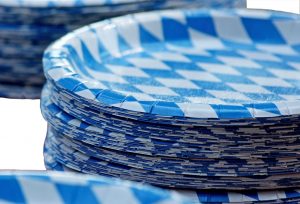 Paper Plate Tambourine: Here’s another simpler project for lower elementary students. You will need paper plates, jingle bells, a hole punch and some string. Because the tambourine is made of paper, students can color or paint their instruments before they put them together, allowing for more creative freedom than some of the other projects! Check out instructions and photos of paper plate tambourines from First Palette.
Paper Plate Tambourine: Here’s another simpler project for lower elementary students. You will need paper plates, jingle bells, a hole punch and some string. Because the tambourine is made of paper, students can color or paint their instruments before they put them together, allowing for more creative freedom than some of the other projects! Check out instructions and photos of paper plate tambourines from First Palette.
Tips for Using Music Crafts in the Classroom
Using manipulatives in the classroom can be a difficult task. Here are some tips to make sure your music projects run smoothly:
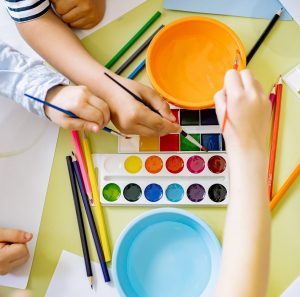 Give instructions before you pass out materials.
Give instructions before you pass out materials.- Hand out supplies one at a time.
- Make them all the same!
Students will jump the gun on your lesson plan if you pass out materials too soon. It’s better to hand out materials one at a time for each step. You can also set up stations around your classroom to aid during transitions.
For younger elementary students, use the same color constructor paper for all the paper trumpets — trust me, this will save you a lot of headaches. If you struggle with classroom management, limit the choices, but offer ways to decorate the instruments (different colored crayons, items that can be glued on, etc.). For more mature classes, you can give students more creative reign. However, if this is your first time doing musical crafts, go slow and keep it simple!
I remember the days when I dreaded teaching my own craft lessons that I had so painstakingly concocted. But with a little bit more planning (and a lot more experience), I eventually got the hang of it!
Which instrument craft are you most excited to try?










